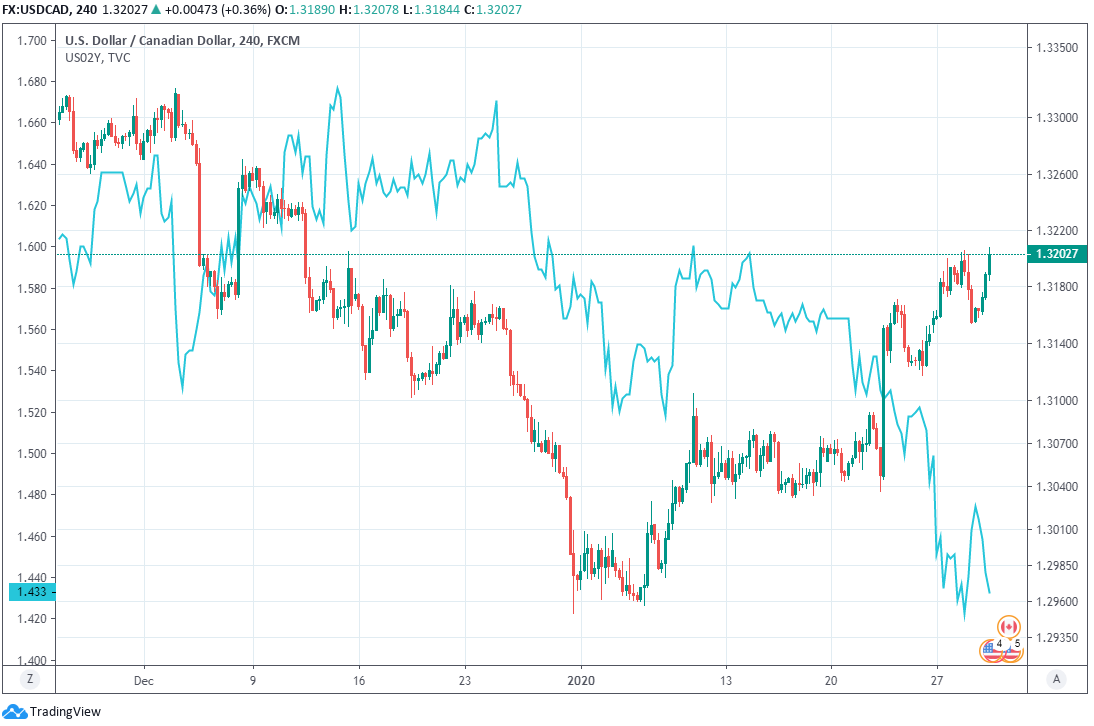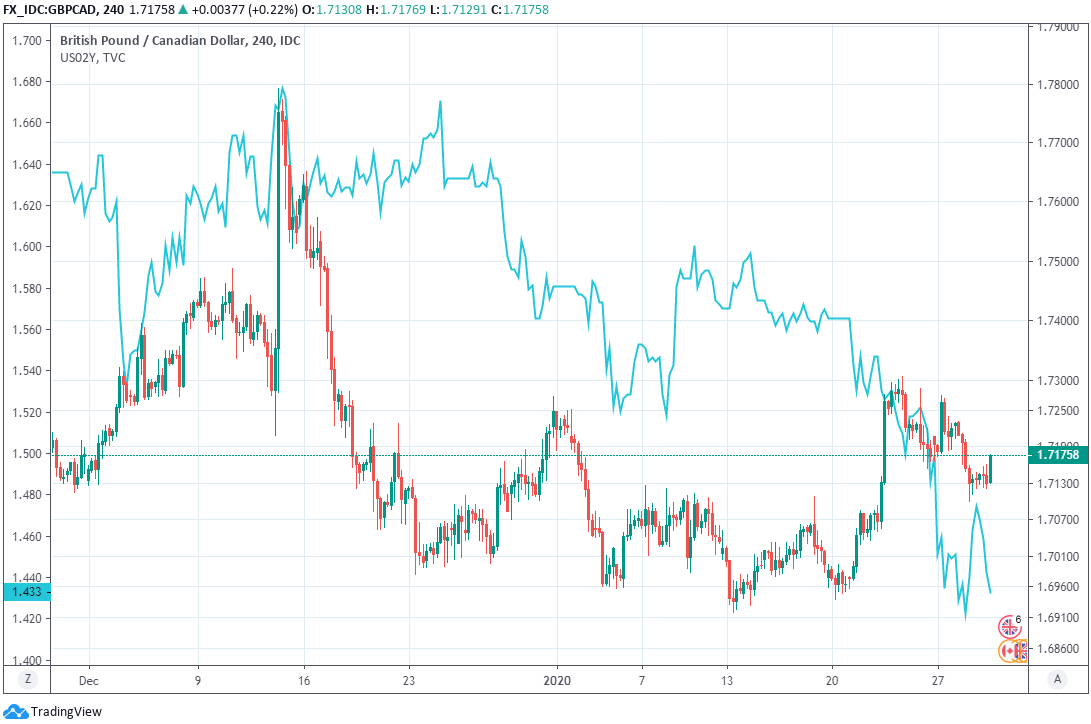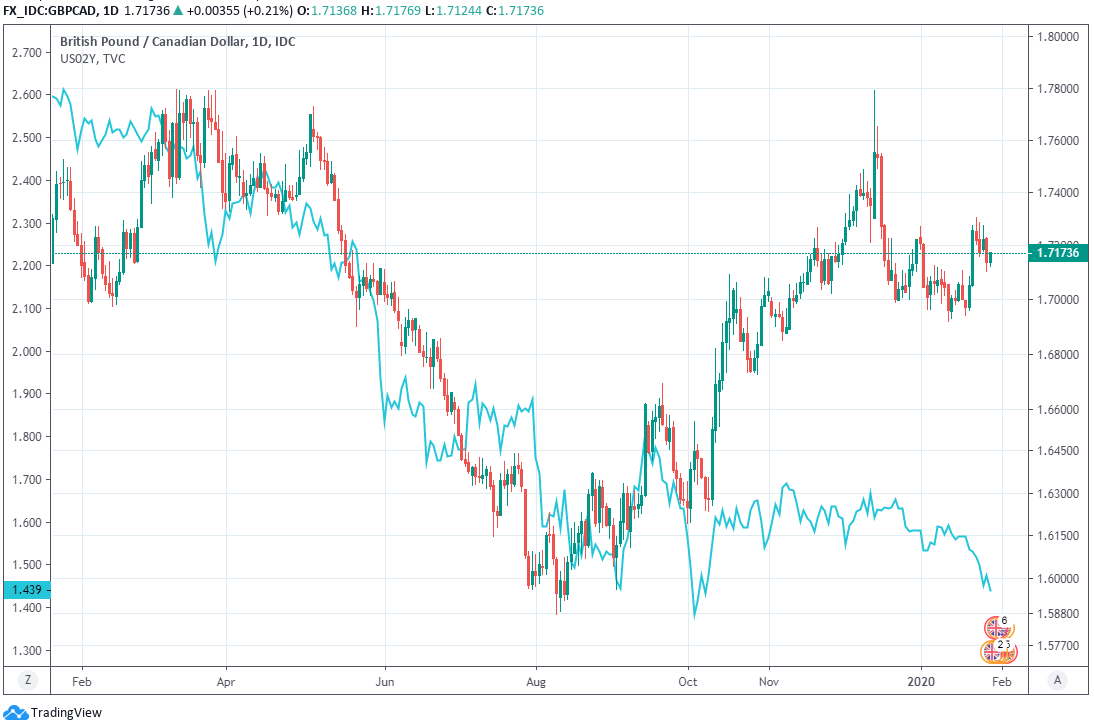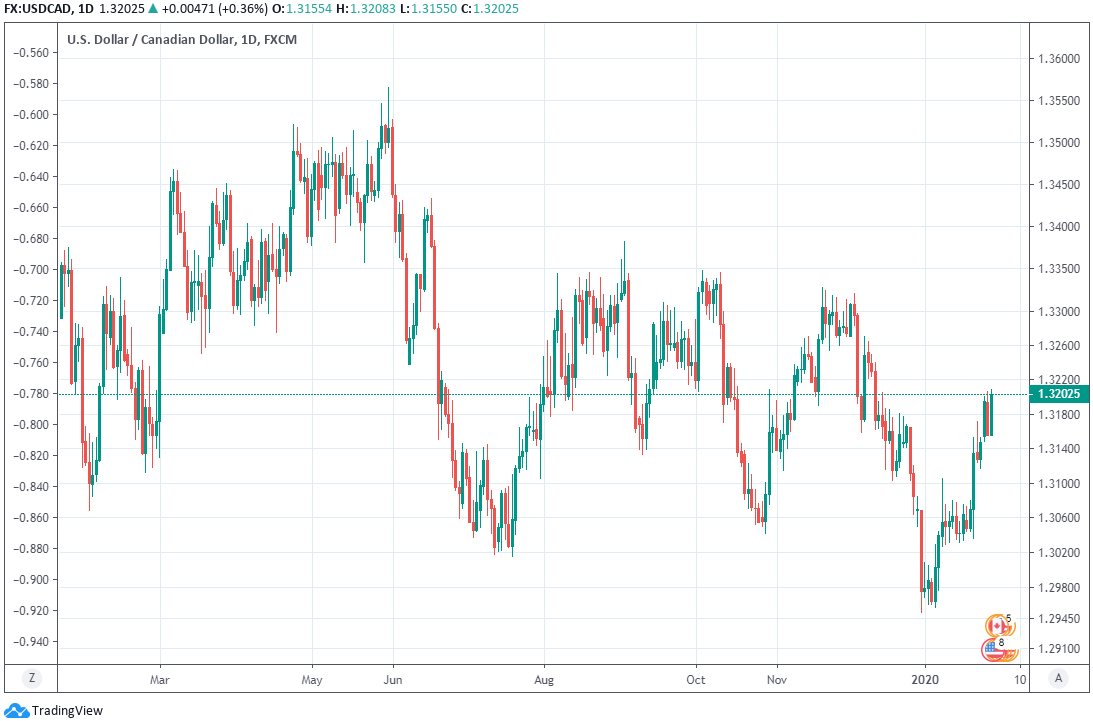The Canadian Dollar Is Unprepared for Coronavirus Impact on Bank of Canada Outlook
- Written by: James Skinner
-
- CAD softens Vs safe-havens, advances on risk currencies.
- As coronavirus fears permeate and market waits on Fed.
- Fed rate decision to offer rough template for others on virus.
- But regardless of Fed, market is unprepared for BoC impact.
- Coronavirus fears to impact growth outlook the world over.
- Bearish for CAD but fears may also directly impact Canada.

Image © Adobe Images
- GBP/CAD Spot rate: 1.7158, up 0.08% today
- Indicative bank rates for transfers: 1.6556-1.6676
- Transfer specialist indicative rates: 1.6899-1.7002 >> Get your quote now
Canada's Dollar was weaker on Wednesday as investors continued to mull the possible economic consequences of a rapidly spreading coronavirus, although even after this performance the Loonie is unprepared for the potential impact the disease could have on the Bank of Canada (BoC) outlook.
The Canadian Dollar ceded ground to the safe-haven U.S. Dollar, Yen and Swiss Franc and was also lower relative to Sterling as fears for the global economy rose with the spread of China's new coronavirus, which is now in at least 17 locations outside of the mainland including Canada. The only currencies the Loonie got the better of on Wednesday were those which are arguably more exposed to the risks thrown up by the virus.
"Dollar/CAD is trading bid this morning as the overnight news flow was negative once again surrounding the coronavirus outbreak," says Eric Bregar, head of FX strategy at Exchange Bank of Canada. "Some traders are now speculating that the WHO will officially announce a pandemic this morning at its press conference at 11am ET. All of this has seen mild “risk-off” flows enter the fray throughout early European trade today and this is helping the USD broadly."
Above: USD/CAD rate at 4-hour intervals and U.S. 2-year bond yield. Falling yield, rising USD indicate safe-have demand.
Coronavirus has spread to all 31 of China's provinces, according to the National Health Commission, with the number of confirmed infections rising from 4,515 to 5,974 between Tuesday and Wednesday. And the province of British Columbia repored on Tuesday, Canada's third case of the deadly disease. There were 1,239 "severe cases" in China as of midnight on January 28, up from 917 the previous day, while the number of fatalities increased from 106 to 132.
And a Chinese government economist was reported Wednesday to have warned that GDP growth of the world's second largest economy could now fall from around 6% annualised, to less than 5% in the first quarter of 2020. But that requires the outbreak to "peak" by mid-February and be over entirely by the end of March, which could yet prove to be optimistic.
"Uncertainty stands to demand a further risk premium of assets exposed to Chinese demand. That probably means interest rates stay lower for longer. China-intensive commodities stay under pressure and the re-rating story for commodity-linked currencies is postponed," says Francesco Pesole, a strategist at ING. "Unsurprisingly in the G10 space, it is AUD, NZD and NOK (as well as CAD) that stand out given their high beta to risk."
Above: Pound-to-Canadian Dollar rate at 4-hour intervals alongside falling U.S. 2-year bond yield.
Authorities have not yet declared a global emergency but even if they don't do any such thing in the days ahead, the situation as it stood on Wednesday could threaten the outlook for BoC interest rate policy and Canada's best-in-class cash rate of 1.75% via two different sets of implications. After all, there are possible direct implications stemming from the virus having arrived in Canada and there's the global trade route to the fore of the BoC's policy deliberations.
In Wuhan of Hubei province, the epicentre of the outbreak, residents are locking themselves away in order to avoid infection. That's seen the local economy grind to a standstill and the city become a ghost town - more on that here - with the Hubei governor having instructed companies Wednesday to remain shut until February 13. But ALL of China's provinces are now effected and the authorities are yet to get a grip on the spread of the virus.
"We remain long USDCAD, eyeing a move to 1.33 as the BOC has expressed a greater willingness to provide easing if the data deterioration persists," says Mazen Issa, a strategist at TD Securities.
Above: Pound-to-Canadian Dollar rate at daily intervals alongside falling U.S. 2-year bond yield.
Earlier this month the Bank of Canada put markets on notice that an interest rate cut will follow any signs the economy is not living up to its forecasts, although markets have been slow to put two-and-two together and fully appreciate the extent to which a rate cut could be becoming more likely. Pricing in the overnight-index-swap market implied on Wednesday morning, an April 15 cash rate of 1.61%, up from 1.59% the prior morning.
Wednesday's pricing has the BoC's April cash rate substantially above the 1.50% that would prevail in the wake of a cut and reflects a judgement on the part of investors that the risks of one being delivered are about evenly balanced. But that judgement could well be mistaken, not least of all because the BoC has long worried that a global slowdown will soon pull the proverbial rug out from beneath Canada's feet - a slowdown that could gather momentum in the coming weeks if the virus remains uncontained.
"Anecdotal reports of activity on the ground across large portions China having ground to a halt are a concern for near term demand of nearly everything, as are announcements of reductions, and even total halts in the case of British Airways, to air travel in and out of China. In short, we remain cautious on risk appetite," says John Hardy, chief FX strategist at Saxo Bank.
Above: USD/CAD rate at 4-hour intervals and U.S. 2-year bond yield. Falling yield, rising USD indicate safe-have demand.
The global trade and business investment channel are not the only possible incitements because policymakers are also watching consumers and households closely, so the BoC will also consider the possible direct impact upon confidence and the willingness of consumers to spend.
However, consumers need to be willing to go near shopping centres in order for them to spend and with the coronavirus now inside Canada, much depends on public confidence in the ability of authorities to keep it contained. Should such confidence evapourate, it could leave this week's climb in the market-implied cash rate looking like an error of judgement on the part of investors.
Good news - no new cases in Ontario.
— Brian Lilley (@brianlilley) January 29, 2020
Bad news...maybe - more people under investigation.
Read & RT #coronavirus #Coronavirustoronto #CoronaVirusCanada https://t.co/vKAjNM1PeO
And on that note, the following singular example at least purports to be from a Canada-based account.
WARMINGTON: No medical screening for arrivals from three China flights https://t.co/yemEeL9ZNT #CoronaVirusCanada So why is the #HealthMinister saying the #thesystem is #Working@CTVNews @CP24 @CityNews @globalnewsto @CBCToronto
— T (@iitony7) January 28, 2020









